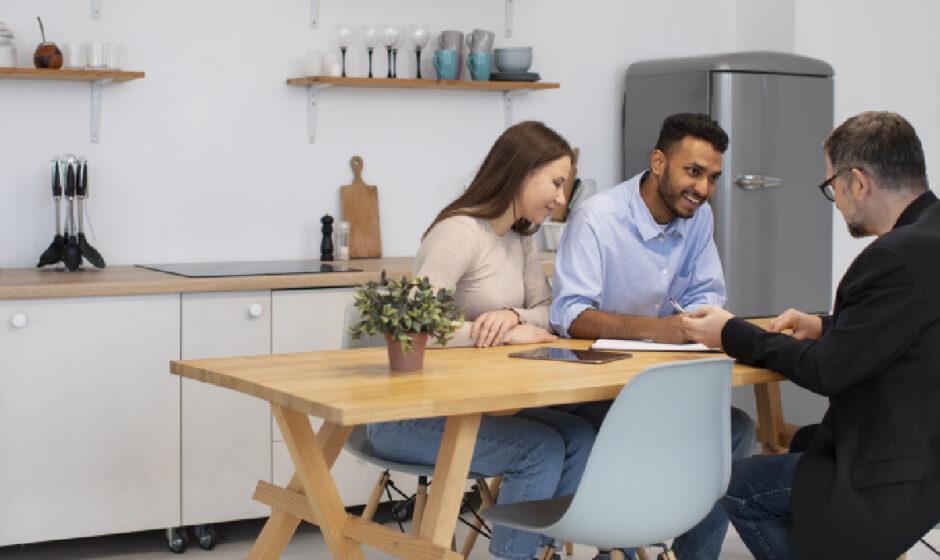Our living environments have a significant impact on how we perceive social interactions within the larger fabric of human interaction. The layout and aesthetics of social areas have a significant influence on how humans interact, communicate, and form groups in addition to being purely functional. In order to better understand how interior design affects social contexts, this article will examine how aesthetically pleasing events, meetings, and public areas promote positive social interactions and a stronger feeling of community. We also explore the important role that inclusive design and inclusive practices have in influencing the dynamics of social spaces.
RECOGNIZING THE DESIGN OF SOCIAL SPACES
Let’s start with the fundamentals before delving into the specifics of how interior design shapes social spaces. The purposeful layout and aesthetics of locations where people congregate, such as homes, workplaces, cafes, or public areas, are referred to as social space design. It takes more than just putting some furniture and paint in to create a space that encourages communication, connection, and a sense of belonging.
EVENTS WITH A STRONG VISUAL APPEAL: CREATING A CONNECTION
Imagine yourself entering a room and being drawn in by the atmosphere right away. The furniture placement, colors, and lighting all work together to create a visual symphony that foreshadows what’s to come. Events that are visually appealing, be they social gatherings, conferences, or parties, serve purposes beyond than just pleasing the eyes. They establish a setting that promotes interaction, ignites discussions, and leaves people feeling at ease and involved.
THE ACTUAL SETUP: THE FURNITURE AND SPACE DANCE
Let’s now get down to business and discuss the actual physical configuration. It takes more than merely arranging tables and chairs at random to create a dance between the furniture and the available space. Consider creating focal points that bring people together, open floor plans that promote freedom of movement, and comfortable seating places that inspire private talks. Similar to dance, the layout directs conversation and establishes the mood for social interaction.
EVENTS: CREATING VENUES FOR INTERACTION
Whether it’s a team meeting or a family meal, gatherings serve as social furnaces where relationships are formed. These areas’ layouts have the power to create or destroy a social atmosphere. Think about how a dining room table is arranged: does it encourage laughing and story-telling? What about a conference room? Does it encourage teamwork and candid dialogue? The way things are arranged physically talks a lot about how people connect and how they experience socializing as a whole.
PUBLIC AREAS: WHERE DIVERSITY AND DESIGN COLLIDE
Public areas such as parks and cafes provide a setting for a variety of social interactions. These areas’ layouts directly affect community development and inclusivity. Imagine a park where the benches are grouped together to encourage both social interaction and introspective thought. Cafes with communal tables and quaint nooks invite chance meetings and special moments. Public space layout acts as a silent conductor, arranging elements of societal diversity into a symphony.
THE TRANSFORMATIVE IMPACT: FOSTERING A SENSE OF COMMUNITY
Let’s go right to the point: interior design has a profoundly positive impact on social spaces. Events that are visually appealing, carefully planned get-togethers, and well-thought-out public areas all add to the feeling of community. It’s about promoting a sense of community, shared experiences, and belonging more than merely aesthetics. The actual arrangement takes on the role of a narrator, telling tales of relationships made, dialogues started, and memories made.
INCLUSIVE PRACTICES: DISMANTLING SOCIAL DIVIDES
Interior design aims to dismantle social barriers in addition to creating a beautiful environment. Spaces are made accessible to all people, regardless of their age, ability, or background, thanks to inclusive design approaches. Imagine a community center with ramps for easy access, or a workstation with ergonomic furniture to suit various needs. Social spaces that are designed with inclusivity become places where diversity is not just accepted but also honored.
METICULOUS DESIGN: A GUIDE TO EMOTIONAL PEACE
Well thought out design is a plan for societal peace, not only for beauty. Think about how a workplace is set up: does it promote community and teamwork between different people? What about a community hall’s layout? Does it help organize activities that unite people? A well-thought-out design influences the general social dynamics and directs people’s interactions inside a space, much like a guide.
EXAMINING EFFECT: HOW SOCIAL INTERACTION IS SHAPED BY DESIGN
We must examine how design decisions affect social interaction if we are to fully comprehend the influence of interior design on social contexts. Every factor, including the lighting, color scheme, and furniture placement, can affect how people interact with one another. A well-designed area acts as a catalyst for impromptu discussions, life experiences, and the development of deep ties.
COLOR PSYCHOLOGY: DETERMINING THE SENTIMENT
Let’s speak about color. It does more than only make things appear nice; it also establishes the mood of a room. Warm hues like yellow and red can arouse sensations of vitality and energy, transforming an area into one that is vivacious and welcoming. Conversely, cold hues like green and blue promote relaxation and a sense of serenity. The way colors are physically arranged in a room becomes a silent language that affects the atmosphere’s emotional content.
CREATING AMBIENCE AND INTERACTION WITH LIGHTING DESIGN
One delicate but effective weapon in the interior designer’s toolbox is lighting. The way lighting fixtures are arranged can affect how a room feels and how people interact with it. Imagine a comfortable nook with warm, gentle lighting; it begs for calm chats and closeness. On the other hand, a brightly lighted common space can provide a vibrant and active social environment. By strategically placing the spotlight on social interaction, the physical layout of the lighting acts as a director.
ORGANIZING FURNITURE TO GUIDE THE FLOW OF CONVERSATION
The furniture arrangement is comparable to a social dance’s choreography. A circular sitting arrangement is one option to consider as it promotes inclusivity and candid discussion. On the other hand, a more formal, linear layout might make targeted conversations easier. The actual placement of furniture in a room serves as a silent facilitator, guiding conversation and influencing social relations.
IMPACT ON THE COMMUNITY: THE CASCADE EFFECT OF WELL-DESIGNED AREAS
Well-designed social spaces have an effect on communities that goes beyond interpersonal interactions. Consider a well-designed community center. It serves as a focal point for a variety of events, attracting people and promoting a feeling of shared identity. The physical layout of areas within a community affects civic involvement, social cohesiveness, and the general well-being of its citizens.
IN CONCLUSION, SOCIAL DESIGN IS BOTH AN ART AND A SCIENCE.
In conclusion, interior spaces and the art and science of social design are powerful factors that influence how we interact, communicate, and create communities. The physical arrangement becomes a language that speaks to our social impulses, from visually appealing events to carefully organized gatherings and inclusive public places. Careful planning and inclusive practices serve as bridges to dismantle boundaries and promote a feeling of community. Beyond aesthetics, well-designed venues have a lasting impact on the mosaic of human interaction by fostering relationships, fostering a sense of community, and producing a lasting impression. Through navigating the symphony of colors and lighting, the dance of furniture and space, and the subtle hints of thoughtful and inclusive design, we come to understand that interior design is about more than just creating beautiful environments; it’s about sculpting the social landscapes that foster meaningful interactions.



